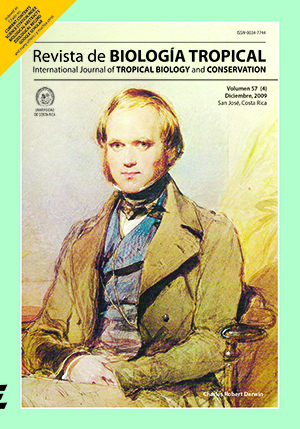Resumen
The Andean weevil Premnotrypes vorax represents an important cause of damage to Colombian potato crops. Due to the impact of this plague on the economy of the country, we searched for new alternatives for its biological control, based on the entomopathogenic bacteria Bacillus thuringiensis. A total of 300 B. thuringiensis strains obtained from potato plantations infested with P. vorax were analyzed through crystal morphology, SDS-PAGE, PCR and bioassays. We used site-directed mutagenesis to modify the Cry3Aa protein. Most of the B. thuringiensis isolates had a bipyramidal crystal morphology. SDS-PAGE analyses had seven strains groups with ?-endotoxins from 35 to 135 kDa. The genes cry 2 and cry 1 were significantly more frequent in the P. vorax habitat (PCR analyses). Three mutant toxins, 1 (D354E), 2 (R345A, ?Y350, ?Y351), and 3 (Q482A, S484A, R485A), were analyzed to assess their activity against P. vorax larvae. Toxicity was low, or absent, against P. vorax for isolates, wild type cry 3Aa and cry 3Aa mutants. The genetic characterization of the collection provides opportunities for the selection of strains to be tested in bioassays against other insect pests of agricultural importance, and for designing Cry proteins with improved insecticidal toxicity.##plugins.facebook.comentarios##

Esta obra está bajo una licencia internacional Creative Commons Atribución 4.0.
Derechos de autor 2009 Revista de Biología Tropical
Descargas
Los datos de descargas todavía no están disponibles.






